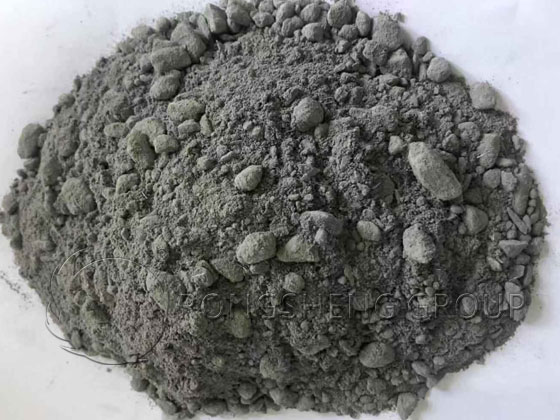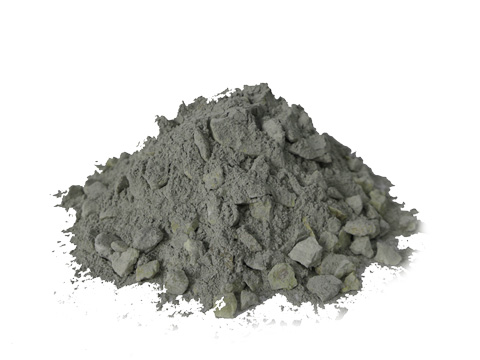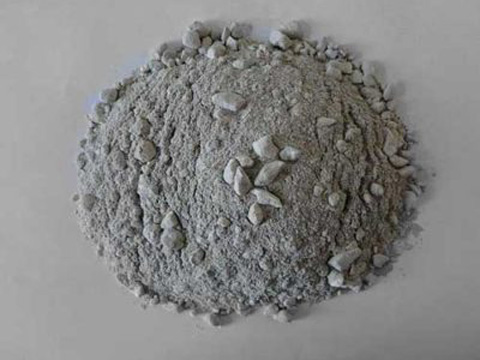Research on new dry process cement rotary kiln mouth castables and analysis of the effects of various additives on its performance. Rongsheng Refractory Materials Manufacturer specializes in providing high-quality refractory lining materials for high-temperature industrial furnaces. Solve the problem of high-temperature industrial furnace linings, extend the service life of furnace linings, and save production costs for enterprises.
Refractory Castables for Cement Rotary Kiln Coal Injection Pipes and Corundum Silicon Carbide Castables for Front Kiln Entrance
Raw materials: special grade vanadium earth, Al2O3>85%; corundum, Al2O3>92%; calcium aluminate cement; α-Al2O3 powder; silica powder; sodium tripolyphosphate; silicon carbide particles and fine powder.
Basic formula: special grade bauxite, 5~8mm accounts for 12%, 3~5mm accounts for 23%, 1~3mm accounts for 15%, <1mm accounts for 20%. Corundum fine powder, SiC fine powder, and binder account for 30%.

(1)Amount of SiC.
The component of silicon carbide is SiC, which appears in colors such as green, black and yellow due to impurities. It is a covalently bonded compound with strong inter-atomic bonding force and has the characteristics of high melting point, high hardness, high strength and low expansion, high thermal conductivity, high electrical conductivity, and strong chemical properties.
(2) Amount of cement.
Cement is one of the important components of refractory castables. It is an important material that determines strength and also affects other properties. Different types of cement and their dosage have different effects on performance.
CA-80 cement refractory castable uses relatively pure CA-80 cement as a binding agent, and is mixed with corundum, mullite, special grade bauxite clinker and alumina powder and other bone powder materials or admixtures in proportion, and add water Made after mixing, shaping and curing. It is characterized by high refractoriness and load softening temperature, high high temperature strength, strong slag resistance and resistance to reducing gases.
(3)Amount of silica powder.
Microsilica powder is an aggregate of a large number of solid particles and belongs to the category of powder materials. Its properties mainly include particle size and distribution, particle shape, density, melting point and chemical composition, particle fluidity, filling, cohesion, consolidation and physical and chemical changes at high temperatures, etc.
In refractory castables, the basic mechanism of action of silica powder is filling. Improved workability, resulting in increased fluidity, increased volume, and reduced apparent porosity. Therefore, the strength of refractory castables has been significantly improved, and other high-temperature properties have also been greatly improved.
(4)Amount of gel powder.
Gel powder is a kind of retarder, used as an admixture for amorphous refractory materials. Refers to materials that increase mass by less than 5% and can improve the performance and workability of basic constituent materials as required. Its main function is to form complexes, inhibiting the hydration reaction and the formation of hydrates. That is, the positive ions dissociated from the retarder and the binding agent form a complex, which inhibits the formation of hydrates or the crystallization of the hydration reactants. Or it inhibits the growth of hydrate phase grains, thereby delaying condensation and hardening. The adsorption film is formed and the cement particles are wrapped, that is, the retarder is adsorbed on the surface of the cement particles and forms a film. It prevents cement particles from contacting water, inhibits cement hydrolysis and hydration reaction speed, and thus plays a retarding effect.
Effect of Various Components on the Performance of High Aluminum Castables
- (1) Add SiC to high-aluminum castables to increase strength and wear resistance. Especially the high-temperature performance is enhanced.
- (2) As the addition amount of silicon carbide increases, the normal and high-temperature strength of the castable increases first and then decreases. The appropriate addition amount of silicon carbide is 3%.
- (3) Adding cement to high-aluminum castables can significantly increase its flexural and compressive strength and reduce its bulk density.
- (4) Comprehensive analysis of the impact of cement blending on its physical properties shows that the best cement blending amount (w) is 5%.
- (5) Different types of cement are mixed with different physical properties.
- (6) Add silica powder to high-aluminum castables to significantly increase its strength.
- (7) Comprehensive analysis of the impact of the blending of silica powder on its physical properties shows that the best blending amount (w) of silica powder is 4%.
- (8) When different types of silica powder are incorporated, the changes in physical properties are related to the changes in SiO2 in the silica powder. The flexural strength and impact strength of materials with high SiO2 content are higher, the water absorption rate is correspondingly lower, and the volume and mass are larger.
- (9) Add cement and silica powder to high-aluminum castables to significantly increase its strength.
- (10) Comprehensive analysis of the impact of the blending of cement and silica powder on its physical properties shows that the best blending amount (w) of cement and silica powder is 5% + 2%.
- (11) Using gel powder as a binding agent, the mechanical properties are significantly enhanced at high temperatures.
- (12) As the content of gel powder increases, the normal and high-temperature strength of the castable first increases and then decreases. The appropriate additional amount of gel powder is 4% (w).



